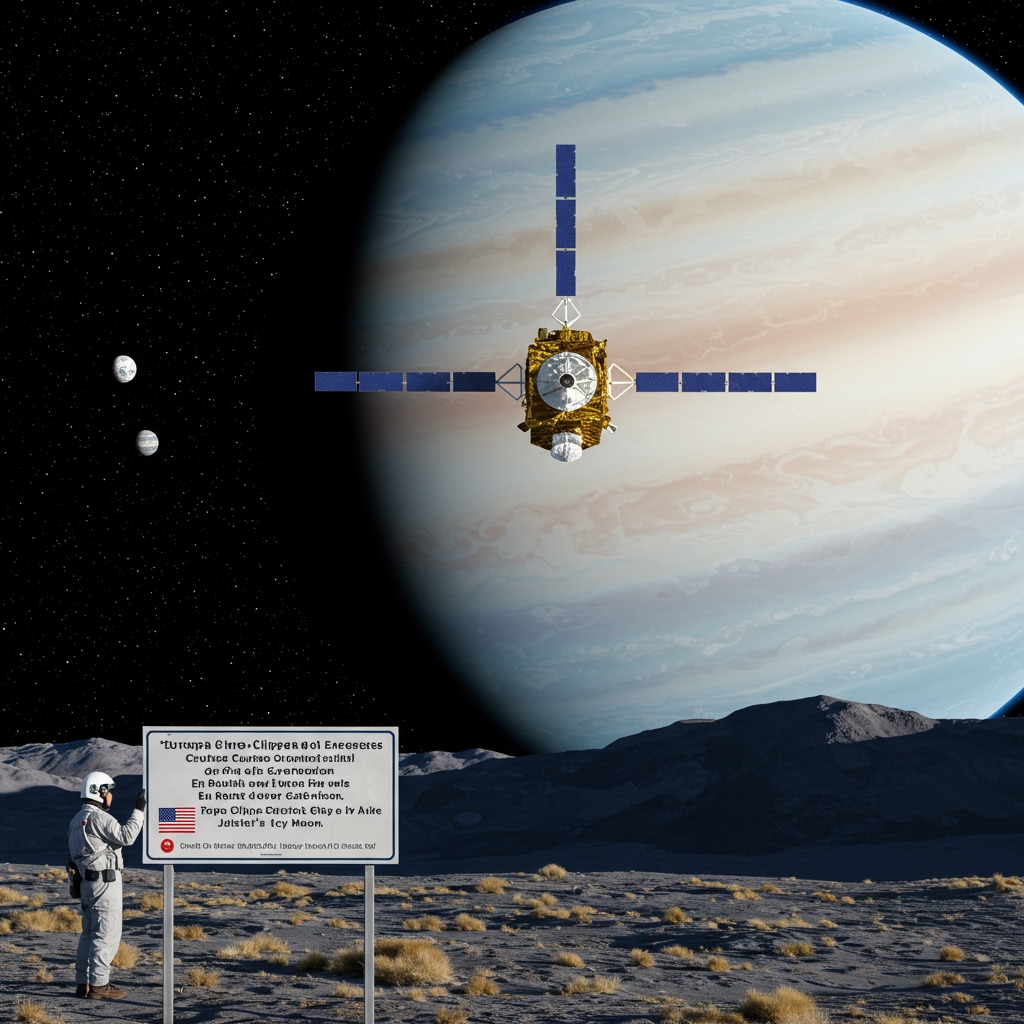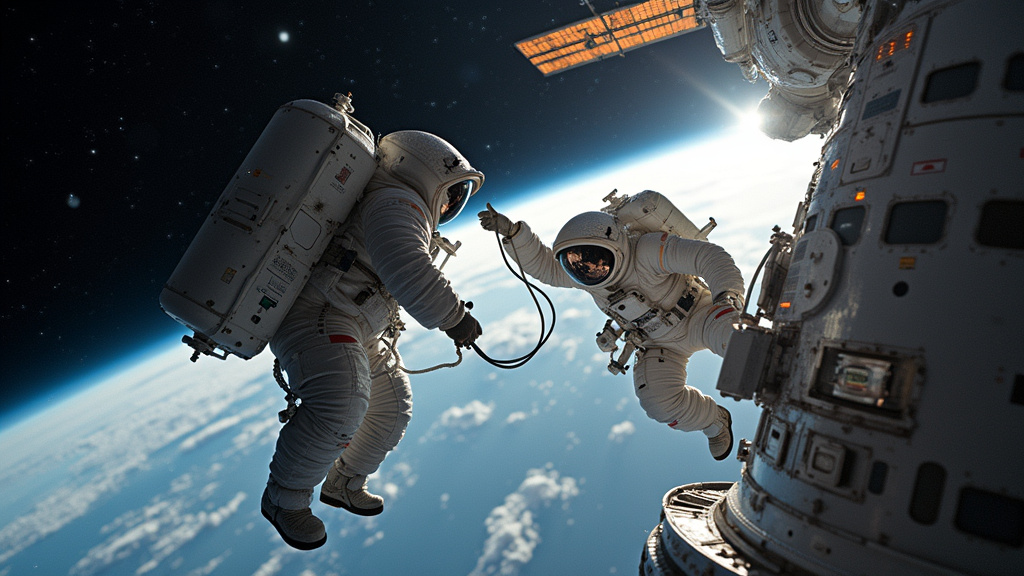NASA’s Europa Clipper Adjusts Course for Historic Mission
NASA’s Europa Clipper spacecraft, on its ambitious journey to explore the potentially habitable icy moon of Jupiter, has successfully completed a pivotal step in its cruise phase. Today, mission engineers confirmed the successful execution of the spacecraft’s first major trajectory correction maneuver (TCM-1).
This critical maneuver involved firing the spacecraft’s thrusters to precisely adjust its flight path, ensuring it remains accurately targeted for future mission milestones. The most immediate and significant of these is a crucial gravity assist flyby scheduled for late 2025. Such gravity assists are essential techniques used in interplanetary travel to gain speed and alter trajectory without expending large amounts of onboard fuel, using the gravitational pull of a planet to slingshot the spacecraft towards its final destination.
Launched in October 2024, the Europa Clipper embarked on a six-year transit across the solar system, aiming for a rendezvous with the Jovian system. The primary target is Europa, the fourth-largest moon of Jupiter, renowned for its thick ice shell that likely hides a vast, salty ocean beneath. This subsurface ocean is of immense scientific interest because it is believed to contain more water than all of Earth’s oceans combined and is considered one of the most promising locations in our solar system to search for conditions potentially suitable for life.
Precision Engineering Guides Deep Space Journey
The successful TCM-1 burn was orchestrated by the dedicated team of engineers at NASA’s Jet Propulsion Laboratory (JPL) in Pasadena, California. JPL manages the Europa Clipper mission for NASA’s Science Mission Directorate in Washington. The execution of such maneuvers requires extraordinary precision, with engineers calculating the exact timing, duration, and thrust level needed to impart the desired velocity change to the spacecraft, currently millions of miles from Earth.
The maneuver’s success is a testament to the health and capability of the Europa Clipper spacecraft itself, as well as the expertise of the ground control teams. Early in a spacecraft’s cruise phase, trajectory correction maneuvers are particularly important to clean up any slight errors from the initial launch injection or previous maneuvers, ensuring the spacecraft is perfectly aligned for future planetary encounters that shape its path.
Journey to Jupiter and Beyond
The six-year journey to the Jovian system is a complex ballet of orbital mechanics. Following the late 2025 gravity assist, Europa Clipper will continue its transit, using subsequent maneuvers and potentially other planetary flybys (depending on the specific trajectory design) to build the necessary speed and vector to intercept Jupiter’s orbit. The spacecraft is scheduled to arrive in the Jovian system by 2030.
Upon arrival, Europa Clipper will not enter orbit directly around Europa. Instead, it will establish a highly elliptical orbit around Jupiter. This orbital strategy is designed to mitigate the effects of Jupiter’s intense radiation belts, which are particularly hazardous closer to the planet and its inner moons like Europa. By spending most of its time outside the most intense radiation zones and making quick, targeted passes through them, the spacecraft can maximize its operational lifespan and scientific return.
Unveiling Europa’s Secrets
The core of the Europa Clipper mission lies in its detailed investigation of Europa during this orbital phase around Jupiter. Over its prime mission, the spacecraft is planned to perform nearly 50 close passes of Europa, flying as low as 25 kilometers (16 miles) above the moon’s surface during some of its closest approaches. During these flybys, the spacecraft will use its sophisticated suite of nine science instruments to gather data.
These instruments are designed to penetrate Europa’s thick ice shell using radar to search for the subsurface ocean and characterize its properties, measure the moon’s magnetic field (which can provide evidence of a salty ocean), analyze the composition of the surface ice and any potential plumes erupting from below, and capture high-resolution images of the surface geology to understand the history of the ice shell and its interaction with the interior ocean. The mission aims to confirm the existence of the ocean, assess its characteristics (like salinity and depth), study the ice shell’s thickness and structure, and search for signs of recent geological activity, including potential plumes that could offer direct access to ocean material.
A Stepping Stone in the Search for Life
The data collected by Europa Clipper will be crucial in assessing Europa’s potential habitability – not necessarily searching for life itself, but determining if the conditions necessary for life as we know it (water, chemistry, energy sources) exist within the moon. Understanding Europa is a key step in NASA’s broader strategy to explore ocean worlds and search for life beyond Earth.
The successful completion of TCM-1 marks an important operational milestone, confirming the spacecraft’s navigation system is functioning correctly and that ground control can precisely command maneuvers needed to keep the mission on its complex trajectory. With this initial course correction complete, the Europa Clipper continues its long voyage across the inner and outer solar system, its sights set firmly on the tantalizing mysteries hidden beneath the icy crust of Jupiter’s moon, Europa, and its arrival in the Jovian system by 2030 for its unprecedented series of close flybys.





